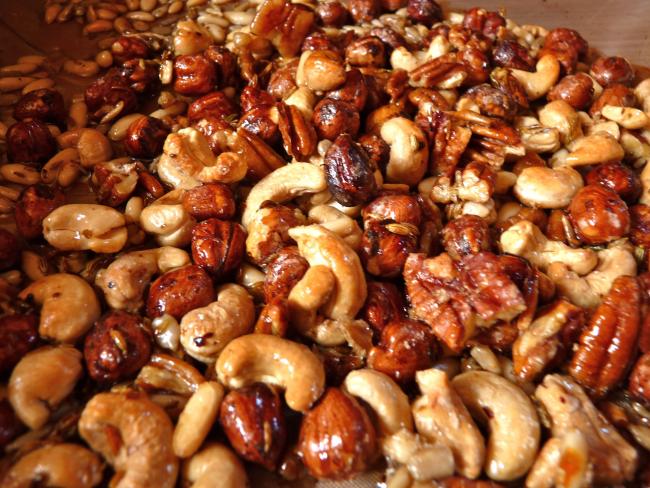You Are What You Eat: Oh, nuts!
Look for nuts in your local markets, and don’t be afraid to ask if they are this year’s crop.
Mon, 11/23/2015
By Katy Wilkens, MS, RD
One of the best things about fall is being able to enjoy foods in the season, like nuts. Nuts are not only delicious, they’re healthy, full of good fats and omega-3 fatty acids. They can be high in calories though, because of their high fat content, but if you cut back on other unhealthy fats like those found in red meats, you’ll have room for the healthy fats in nuts. Think of nuts like a storage box for nutrients – chock-full of protein, potassium, and vitamin E. All these nutrients are needed to keep your heart, kidneys and the rest of your body running at its best.
Look for nuts in your local markets, and don’t be afraid to ask if they are this year’s crop. Nuts store well; they keep for months, if not longer. Slip a zip-close bag of them into your lunchbox, office drawer or glove box. In the future, when you are working late, caught in traffic or wishing you had dessert, they’ll be waiting to help satisfy your hunger in a nutrient-dense way.
Add small amounts of nuts to favorite recipes to boost their nutritional content. Add pecans to a beet and blue cheese salad, try chestnuts oven-blasted with Brussels sprouts, sprinkle cashews on top of homemade pumpkin soup, mix hazelnuts into turkey or salmon salad for sandwiches, or try mixing almonds with dried fruit for a snack.
Candied nuts for salads, soups, snacks
Candied nuts are sold in the grocery store for outrageous prices, and they often are salted – not great for your heart or kidneys! Easily make your own to sprinkle in salads, top soups, put in sandwich fillings or just to snack on. Try this simple approach to making candied nuts – the trick is to watch them carefully as they burn quickly.
½ -1 cup nuts (pecans, hazelnuts, walnuts or a mixture)
¼ cup sugar
2 tablespoons water
Optional: 1 teaspoon cinnamon, cayenne pepper or 5-spice powder
Put nuts in small frying pan, add sugar and water. Heat over medium heat until sugar starts to turn light brown and water has evaporated. Stir in spices if desired. Remove from heat and spread on sheet of parchment paper, separating nuts while they are hot with a fork. Once cool, use in cooking or store in a cool, dry place.
Nutritional information (per 1-ounce serving):
Calories: 144, Carbohydrates: 9 grams, Protein: 4 grams, Sodium: 1 gram
Fall pecan and beet salad
1 bunch red beets
¼ cup or so olive oil
½ cup white balsamic vinegar
2-3 tablespoons fresh basil or parsley, finely cut
½ cup toasted pecans (candied or plain)
½ cup blue cheese or goat cheese
Heat oven to 400 degrees. Remove the beet tops, leaving about a half-inch of stem. Wash thoroughly. Wrap beets loosely in foil and place them on a baking sheet. Roast beets until tender. Let cool. (If you are in a hurry, cook covered in microwave, then put in cold water to chill.)
Peel cooked beets and cut off their tops and tails, dice. Toss with oil and vinegar to taste. Refrigerate for at least an hour. Serve in individual bowls. Just before serving, sprinkle with basil (or parsley), nuts and cheese. Wait until ready to eat, as the cheese will turn pink and the nuts will get soggy if you mix the ingredients too far ahead. Serves four.
Nutritional information (for four servings):
Calories: 348, Carbohydrates: 16 grams, Protein: 7 grams, Sodium: 265 milligrams
The information in this column is meant for people who want to keep their kidneys healthy and blood pressure down by following a low-sodium diet. In most cases, except for dialysis patients, a diet high in potassium is thought to help lower high blood pressure. These recipes are not intended for people on dialysis without the supervision of a registered dietitian.
]Katy G. Wilkens is a registered dietitian and department head at Northwest Kidney Centers. The 2014 recipient of National Kidney Foundation Council on Renal Nutrition’s Susan Knapp Excellence in Education Award, she has a Master of Science degree in nutritional sciences from the University of Washington. See more of her recipes at www.nwkidney.org.]


